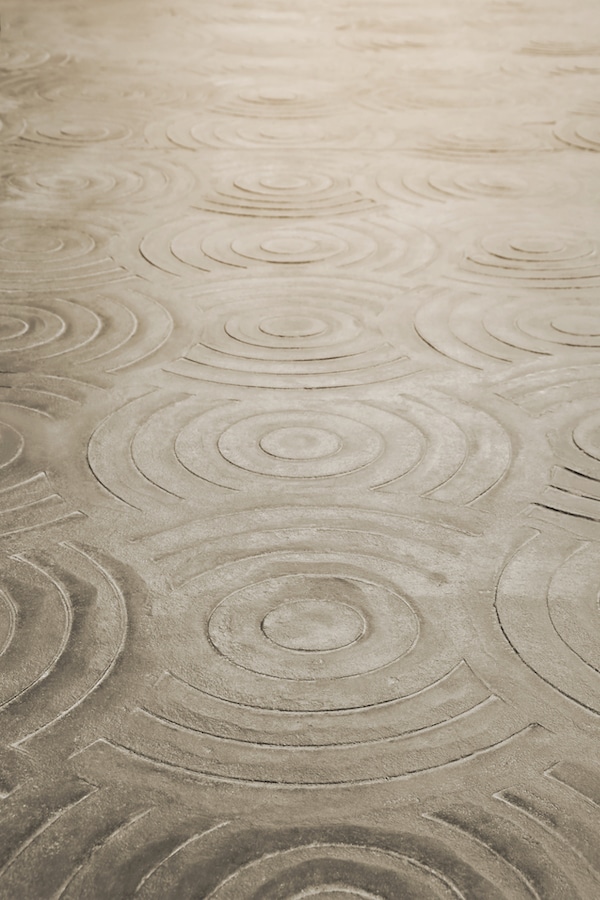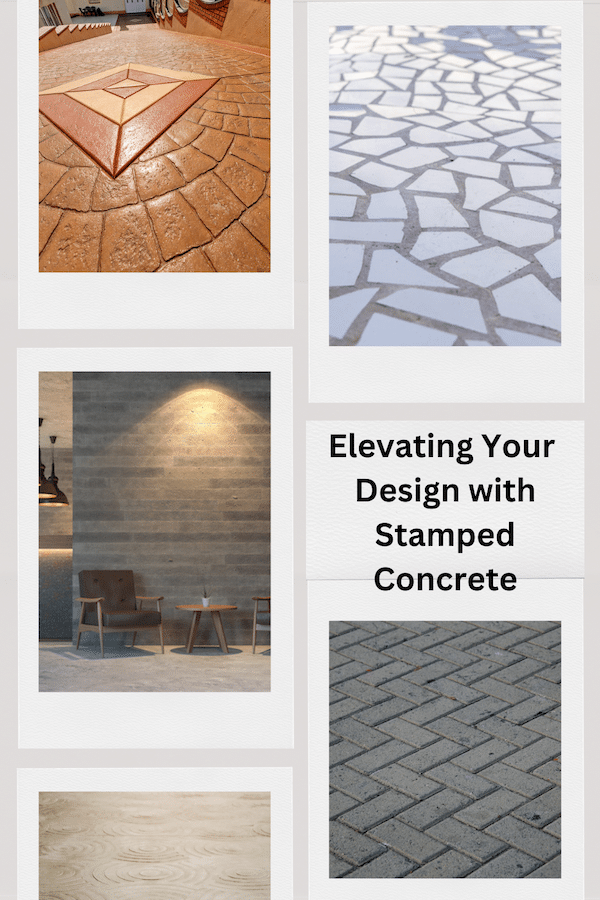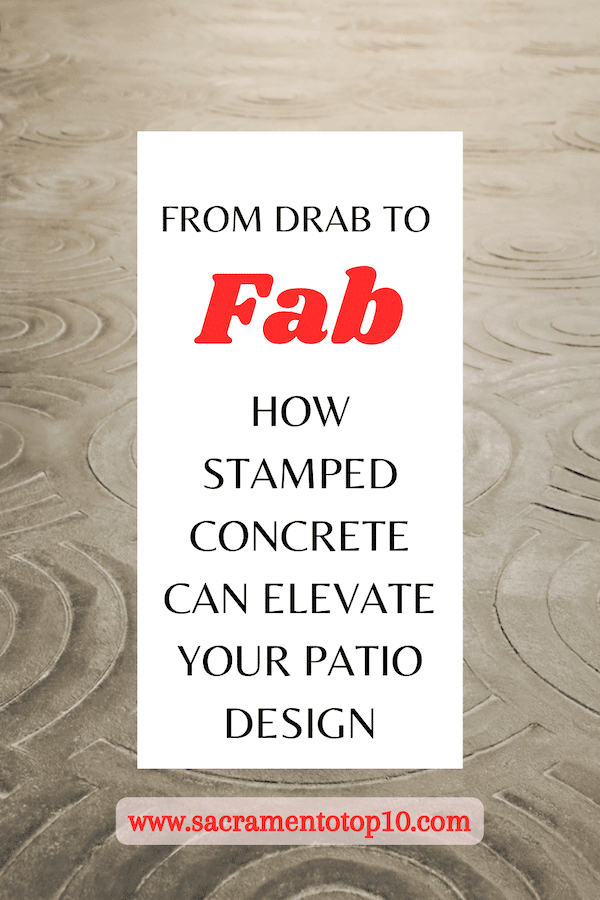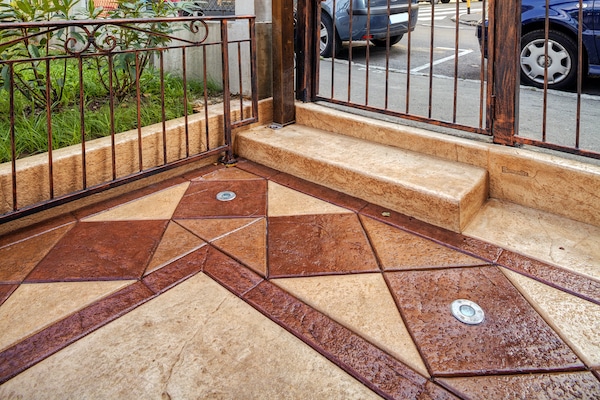Are you looking for a way to enhance the curb appeal and property value of your home? Look no further than stamped concrete for your outdoor living spaces. This versatile and cost-effective material can transform your patio from drab to fab in no time. Here’s how:
Advantages of Stamped Concrete for Patio Design
Stamped concrete is a popular choice for patio design due to its many advantages. First and foremost, it offers a wide range of customization options, including various colors, patterns, and textures. This allows you to create a unique look that complements your home’s style and personality.
In addition to its aesthetic benefits, stamped concrete is also a cost-effective solution for outdoor living spaces. It requires less maintenance and upkeep than other materials, such as wood or natural stone, and is more durable and weather-resistant as well.
Concrete Overlay and Decorative Options
If you already have a concrete patio that’s in need of a makeover, consider using a concrete overlay to improve its appearance. This process involves applying a thin layer of concrete over the existing surface, which can then be stamped and colored to create a variety of decorative effects.
There are many texture and pattern options available for stamped concrete, including brick, stone, and wood. Staining and coloring techniques can be used to further customize the look of your patio.
Weather-Resistant and Long-Lasting Solutions
Stamped concrete is a weather-resistant and long-lasting solution for outdoor living spaces. It can withstand the elements and heavy foot traffic, making it an ideal choice for patios, driveways, and walkways. It also has a longer lifespan than other materials, which means you won’t have to replace it as frequently.
Maintenance and Eco-Friendly Tips
To maintain the appearance and longevity of your stamped concrete patio, it’s important to keep it clean and well-sealed. Regular cleaning and sealing can help prevent staining and other forms of damage.
If you’re looking for an eco-friendly option for your stamped concrete patio, consider using recycled materials or selecting a contractor who prioritizes sustainability.
Residential and Commercial Applications
Stamped concrete can be used in a variety of residential and commercial applications, including driveways, walkways, and patio design. It’s a versatile material that can be customized to suit your specific needs and preferences.
In conclusion, stamped concrete is a fantastic way to elevate your patio design and enhance the curb appeal of your home. With its many customization options, weather-resistant properties, and long-lasting durability, it’s a cost-effective and attractive solution for any outdoor living space.
FAQ – Frequently Asked Questions
Stamped Concrete
Stamped concrete is a decorative concrete option that is patterned or textured to resemble natural materials like brick, stone, or wood. The patterns are stamped onto the concrete while it is still wet.
Stamped concrete offers a variety of benefits, including its durability, low maintenance, and versatility. It can be used for patios, walkways, pool decks, and other outdoor surfaces, and can be customized to match any design style.
When properly installed and maintained, stamped concrete can last for decades. The durability of stamped concrete depends on factors such as the quality of the installation, the thickness of the concrete, and the climate in which it is installed.
The cost of stamped concrete varies depending on factors such as the size of the area to be stamped, the complexity of the pattern, and the location of the installation. On average, stamped concrete costs between $8 and $18 per square foot.
To install stamped concrete, a base layer of concrete is poured and smoothed, and a color hardener is added to create the desired color. A release agent is then applied to prevent the stamping tools from sticking, and the pattern is stamped onto the surface of the wet concrete. Finally, a sealer is applied to protect the surface and enhance the color.
Stamped concrete can be slippery when wet, especially if it has a smooth surface. To increase traction and reduce the risk of slipping, a slip-resistant additive can be added to the sealer.
Yes, stamped concrete can be stained using acid-based or water-based stains. Staining can enhance the color and add depth and dimension to the pattern.
Stamped concrete requires little maintenance beyond regular cleaning and sealing. To clean stamped concrete, use a mild detergent and a soft-bristled brush or pressure washer. Sealing should be done every two to three years to protect the surface from moisture and staining.
Stamped concrete can be customized to match any design style, from traditional to modern. Some popular design options include cobblestone, slate, brick, and wood plank patterns, as well as custom designs and logos. Color options are also virtually limitless, with a range of hues and shades available to complement any design.







